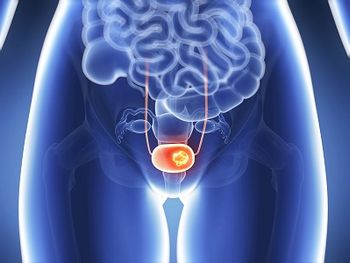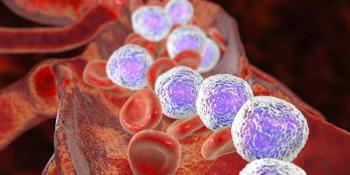
Evaluating Ways to Maximize Immunotherapy Use in NSCLC
“We have huge amounts of work to do to maximize the efficacy of immunotherapy,” Christine Bestvina, MD, said during an interview with CancerNetwork.
During a conversation with CancerNetwork®, Christine Bestvina, MD, stated that whether it’s because of primary resistances or subsequently acquired resistances, only 20% of patients respond to immunotherapy long-term. While it was a “huge win” to achieve immunotherapies in NSCLC, she added that going forward, there still is a great deal of work to be done to better maximize the efficacy of immunotherapies and broaden the percentage of patients to have durable responses is the “thing we’re most in need of”.
According to Bestvina, an associate professor of medicine at the University of Chicago, the issue of acquired resistance to immunotherapy is one that physicians need to solve. Unlike acquired resistance to targeted therapies, resistance to immunotherapy is an academic problem that will require physicians to uncover what, exactly, is happening in the tumor microenvironment.
She expressed that when they do start to understand the tumor microenvironment more, it will allow for them to create individualized “targeted therapies” based on characteristics of each patient’s immune system and craft treatments on a patient-to-patient basis.
Transcript:
While immunotherapy was a huge win for NSCLC, unfortunately, the majority of patients will still either have primary resistance, meaning [they’ll] never respond to immunotherapy in the first place, or [they’ll have] subsequently acquired resistance, with only 20% of patients being long-term responders to immunotherapy. For these patients who do not possess targetable alterations up front, we have huge amounts of work to do to maximize the efficacy of immunotherapy, whether that be in combination with novel agents, such as bispecific [antibodies]. Broadening the number of patients who have a durable response to immunotherapy is the thing we’re most in need of.
Currently, the issue of acquired resistance to immunotherapy is largely an academic one where we are trying to understand what the molecular mechanisms are and what scientifically is happening in the tumor microenvironment that is leading to these resistance mechanisms. We’re not quite at a point where we can understand acquired resistance to immunotherapy in the same way that we often can understand acquired resistance to targeted therapies. In the future, the goal is that we can potentially recommend rescue therapies for patients who have had progression on immunotherapy, that best fit with what’s happening in their tumor microenvironment or based on other parameters of their own immune system. That [way] we can better match them with their own “targeted therapy” even if it is immunotherapy-based.
Newsletter
Stay up to date on recent advances in the multidisciplinary approach to cancer.


















































































